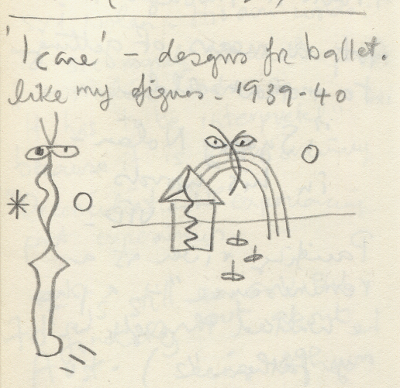|
Old brain
[2008-03-27]
animation: Lisa Roberts
Sydney 2008
voice: Phil Dadson
Buenos Aires, 2008
Len Lye had this concept of the Old Brain.
Phil Dadson, Buenos Aires, 2008

Seeing Sydney Nolan's designs for the ballet, Icare at the National Gallery of Victoria, 14 December 2007, I recognised figures that appear in my drawings.
Spontaneous doodlings
can free the old brain
to recognise things
that have always been there.
While setting up our work in Buenos Aires
for the 'Sur Polar' show last March,
Phil Dadson explained
Len Lye's notion of the Old Brain.
Listening to his words, I drew
and animated in a time line
to Milankovitch cycles.
The vertical line moving across the screen
marks the 'eccentric' cycle of Earth's orbit round the sun.
This is the longest of three cycles that set the natural patterns
of climate change, between glacial and interglacial periods.
Within a time frame of 100,000 years
the elliptical shape of Earth's orbit changes.
Within this cyclic pattern,
two others occur:
the tilting of the Earth's axis
and a wobbling, like a top, around that axis.
Together these three motions
set our distance from the sun over time.
Within these cycles
life forms grow, change and die.
Human actions, we believe,
have upset the natural pattern,
tipping the balance
towards an untimely Greenhous World.
[Len Lye] practised a form of automatism,
in which he attempted to suppress
his more recently evolved 'new brain'
to free his 'old brain'
to produce his 'doodlings' and his writing.
He exhibited with the surrealists in London in the 1930s,
but generally found them too literary,
and far from his ideal of
'the kinetic of the body's rhythms'.
Arthur Cantrill,
'The Absolute Truth
of the Happiness Acid', 1968
| 